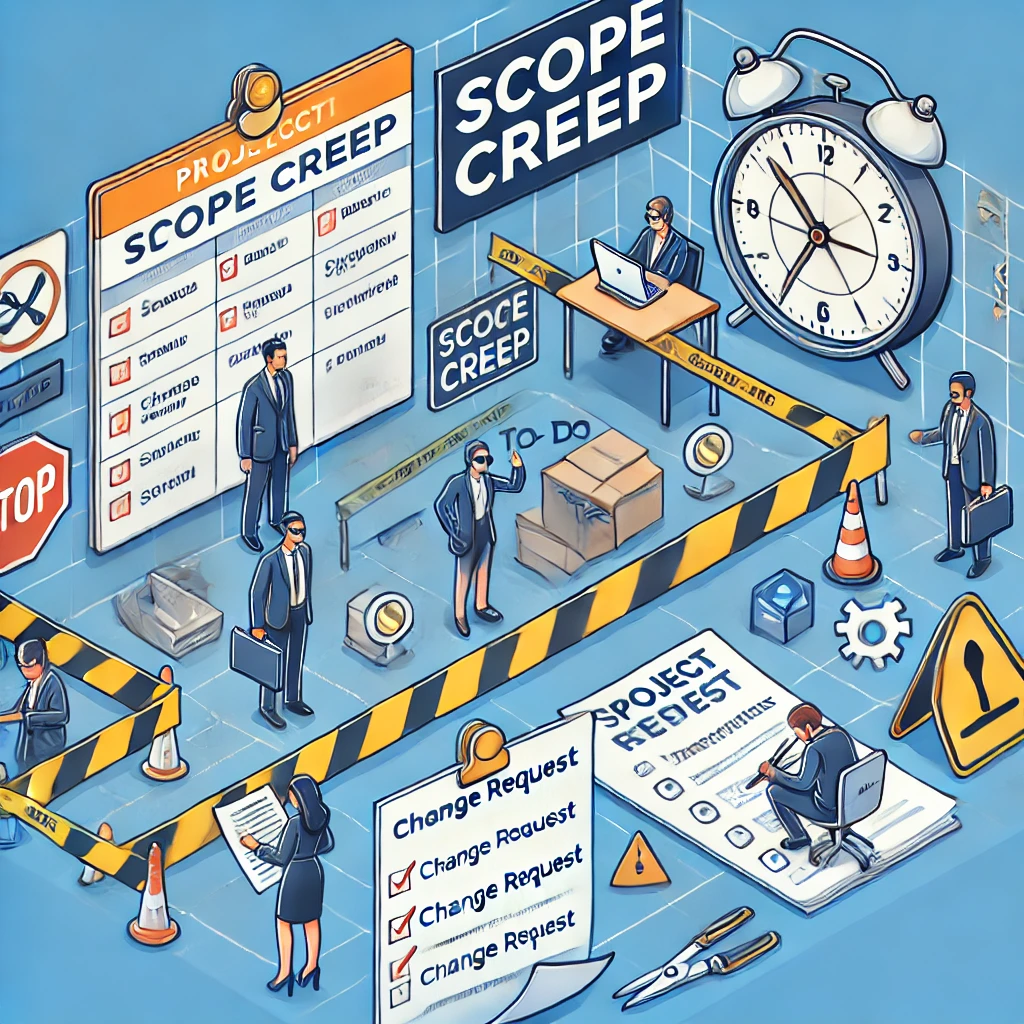Subtotal د.إ0.00
Scope creep, often referred to as requirement creep or feature creep, is the uncontrolled expansion of a project’s scope without corresponding adjustments to time, budget, or resources. How to Manage Scope Creep and Keep Projects on Track. This phenomenon can lead to missed deadlines, budget overruns, and compromised project quality. Effectively managing scope creep is crucial for keeping projects on track and ensuring successful .
Understanding Scope Creep
Scope creep typically occurs when new features or requirements are added to a project without proper evaluation or approval, often due to poorly defined project objectives, inadequate communication, or evolving stakeholder expectations. While some degree of change is inevitable in projects, uncontrolled changes can disrupt workflows and lead to significant challenges.
Common Causes of Scope Creep
- Unclear Project Requirements: When project goals and deliverables are not clearly defined from the outset, it leaves room for misinterpretation and additional requests.
- Poor Communication: Lack of consistent communication between team members and stakeholders can result in misaligned expectations and uncontrolled changes.
- Lack of Change Control Processes: Without a structured process to handle new requests, changes can be added informally, creating chaos and confusion.
- Stakeholder Influence: Stakeholders may introduce new requirements mid-project. Without clear boundaries and documentation, these requests can spiral out of control.
- Overconfidence in Team Capacity: Teams may underestimate the effort required to complete new tasks, leading to overcommitment and eventual scope creep.
Strategies to Prevent and Manage Scope Creep
- Define a Clear Project Scope: Develop a detailed project scope statement that outlines objectives, deliverables, timelines, and constraints. Ensure all stakeholders sign off on this document to establish a common understanding.
- Implement a Change Control Process: Establish a formal process where every new requirement is evaluated for its impact on time, budget, and resources. Obtain stakeholder approval before proceeding with any changes.
- Maintain Regular Communication: Conduct regular meetings with stakeholders and team members to discuss progress, address concerns, and manage expectations. Transparent communication helps in identifying potential scope changes early.
- Set Realistic Expectations: Align stakeholder expectations with project realities by discussing potential trade-offs and emphasizing that adding features will impact the budget and timeline.
- Utilize Project Management Tools: Employ tools like Orangescrum or Jira to track tasks, manage changes, and maintain transparency. These tools can help in monitoring progress and identifying potential scope creep.
- Engage Stakeholders Early: Involve all relevant stakeholders during the initial planning stages to ensure their expectations and requirements are understood and documented. Early engagement helps in minimizing the risk of scope creep.
- Document Everything: Keep detailed records of all project requirements, changes, and communications. Documentation provides a reference point and helps in managing any disputes or misunderstandings.
- Educate the Team: Ensure that all team members understand the project scope and the importance of adhering to it. Educated teams are more likely to recognize and resist unauthorized changes.
- Monitor and Review: Regularly review project progress against the defined scope. Continuous monitoring allows for early detection of scope creep and timely corrective actions.
- Learn from Past Projects: Analyze previous projects to identify common causes of scope creep and implement lessons learned to prevent recurrence.






